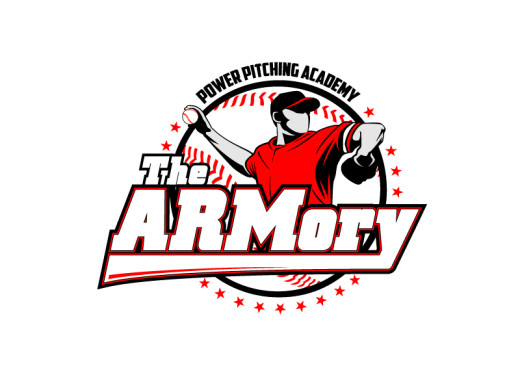Save the Cannons: Developing Throwing Ability While Keeping young Arms Safe and Healthy
Unless you live under a rock, you have to be aware of the rash of elbow injuries MLB players. Rays fans here in Tampa are all waiting anxiously for new from lefty phenom Matt Moore’s visit to Dr. James Andrews.
I saw the game when he got hurt.
I’m betting UCL tear.
I just heard Dr. Andrews being interviewed on MLB radio about the contributing factors to the recent epidemic. One of the things he spoke about was the fact that the injuries we are seeing are the end line of a process that begins at an early age. Young players with poor throwing mechanics are injured at ages 8-12. The damage is done then, and the problem continues to progress to failure when they reach high school, college or the pros.
Coincidentally, prior to hearing the interview this morning, I had already begun to prepare what I consider to be my most important Rocket Science Live Seminar/Webinar Ever.
It’s a new campaign I call “Save the Cannons”.
The campaign will launch with a live event that will take place on Wednesday April 23rd at 7:00 pm. I will have 2 current college level clients/patients giving their personal testimonies of inefficient mechanics, and improper training that began in little league and led them to ultimate arm failure. Then I’ll to be talking to parents and players about what we can do to stem the tide and keep these young arms safe and healthy.
One young man you’ll hear from has an especially poignant story to tell.
Caleb is a college sophomore who loves baseball. He has played it his entire life. An infielder and a catcher through little league and high school, he never really pitched a lot.
By his own account he was never much of a hitter, so he came to us last winter with hopes of converting to pitcher only status to extend his career. We were working hard on eliminating a forearm flyout problem we found in his initial evaluation, but he couldn’t ever really gain any traction in our program because every time he threw, his arm would begin to hurt. The pain was in the biceps and on the outside of his arm, and frankly, it was a little perplexing to us. He had no pain over his Tommy John ligament. We sent him to see Dr. Eaton, who initially thought he had a radial nerve irritation and gave him a cortisone injection. When the pain persisted, Caleb went back to see the doctor. The MRI revealed that Caleb had a torn UCL.
We were all stunned.
After reviewing the MRI, Dr. Eaton told him that he had most likely torn it sometime between little league and high school, and that the pain he was having was due to his biceps muscle working extra hard to substitute for UCL that had been absent for several years.The doc added that since overuse probably wasn’t a big factor, the way he threw–his throwing mechanics–probably played the most significant role.
I talked to his dad, a former high school pitching coach, after hearing the news and he said, “You know, I always knew he had sort of a funky arm action, but we really didn’t know what to about it.”
Caleb decided not to have the surgery and has ended his playing career.
I called him last week and asked him if I could share his story, and if he would be willing to speak at our next live seminar. He said. “If will help someone else, I would be happy to do it.”
I know Caleb’s parents are as proud of him as I am.
You need to hear his story first hand.
If our next generation of players is to have a chance at avoiding this plague, early intervention and education critical.
Save The Cannons. A Rocket Science Live Presentation.
Wednesday April 23rd, 2014
7:00 pm
If you are the parent of a young baseball player, please make plans to attend either in person or via our live webcast.
This is the most important thing I have ever done.
Topics will include:
Will pitch limits prevent injury?
Is overuse really the problem? (Hint: not usually)
Are curve balls safe for young arms?
What about a splitter?
What is a growth plate and how do I protect it?
What is a labrum and how do I protect mine?
What is a Rotator cuff and how do I protect mine?
What is a Tommy John Ligament and how do I protect it?
Are my throwing mechanics hurting my arm?
Is side arm throwing safe?
Is it really tendinitis?
What are the safest and efficient throwing mechanics?
How do I teach/learn safe and effective throwing mechanics?
If my mechanics are good, what other factors could contribute to injury?
How do I balance development of ability and safety?
If I do get hurt, how should I manage it?
Where are the most important factors in recovery from injury?
Is overuse really the problem? (Hint: not usually)
Are curve balls safe for young arms?
What about a splitter?
What is a growth plate and how do I protect it?
What is a labrum and how do I protect mine?
What is a Rotator cuff and how do I protect mine?
What is a Tommy John Ligament and how do I protect it?
Are my throwing mechanics hurting my arm?
Is side arm throwing safe?
Is it really tendinitis?
What are the safest and efficient throwing mechanics?
How do I teach/learn safe and effective throwing mechanics?
If my mechanics are good, what other factors could contribute to injury?
How do I balance development of ability and safety?
If I do get hurt, how should I manage it?
Where are the most important factors in recovery from injury?
Do me a favor…..
Spread this e-mail around to the parents of every youth baseball player you know.
People need to hear this message.
Thank you,
Randy Sullivan, MPT
CEO, The ARMory Power Pitching Academy.










Leave a Reply